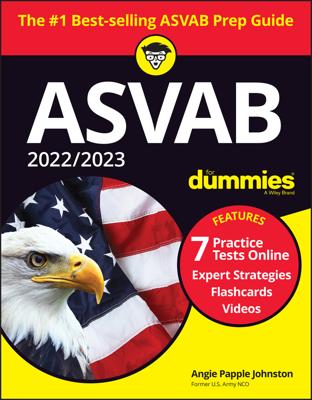If you haven’t picked up auto and shop knowledge by this point in your life and want to do well on this subtest of the ASVAB, one thing you can do is get an automotive manual and take your car apart (hoping that you can get it back together again). Then get a woodworking book and build some furniture for your mom. (Even if you mess it up, Mom always likes gifts from the heart.)
Or you can check out your local community college, which may be a more practical solution. Many community colleges offer basic auto and shop classes. You may also want to take a gander at the following books:
Auto Repair For Dummies by Deanna Sclar
Woodworking For Dummies by Jeff Strong
Home Improvement All-in-One For Dummies by Roy Barnhart, James Carey, Morris Carey, Gene Hamilton, Katie Hamilton, Donald R. Prestly, and Jeff Strong
On this subtest, you usually either know the answer or you say, “Huh?” However, some questions you run into can be answered by using the common sense approach. For example, say you run into a question on the ASVAB that reads something like the following:
When attaching two pieces of wood together, the most secure bond would be formed by using
(A) wood screws
(B) nails
(C) wood glue
(D) both A and C
If you think about it, screws have threads, which are likely to “grab” wood more securely than a nail would. Glue would likely strengthen that bond even more. It’s obvious that the common sense answer would be Choice (D).
Try a variation of the same question:
The best fastening method to use when attaching pieces of wood together when time is of the essence would be
(A) wood screws
(B) nails
(C) wood glue
(D) both A and C
In this case, the best answer would be Choice (B), because pounding a nail in with a hammer is generally faster than waiting for glue to dry or screwing a screw in with a screwdriver (even in these days of electric screwdrivers).
When all else fails, guessing is okay. (Unless you’re near the end of the subtest while taking the CAT-ASVAB. Too many wrong answers at the end of the subtest may draw a penalty against your score.) If you guess, you have a 25 percent chance of guessing the right answer. If you leave the answer blank, you have a 0 percent chance.
If you’re taking the computerized version of the ASVAB, you don’t have a choice, of course, because you must provide an answer before you’re presented with the next question.

